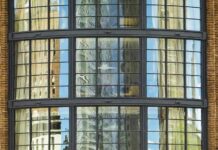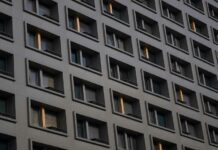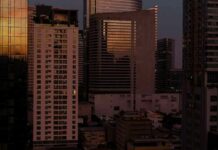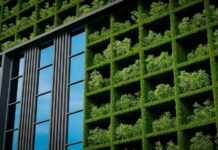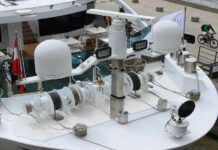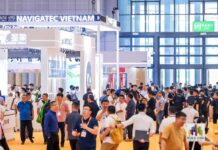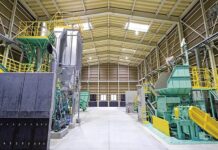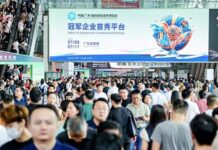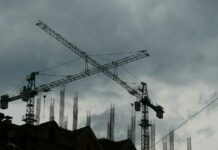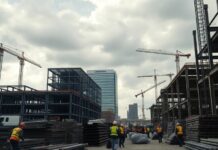After undergoing large scale structural adjustment and integration in the past few years, the lighting industry has ushered in a new period of transformation, with smart and human centric lighting as a key area for new business growth. Guangzhou International Lighting Exhibition (GILE) will therefore accompany lighting industry players through the evolution of lighting technology and the new applications and cross-industry collaboration this brings, by exploring different topics and providing exhibitors with a high-quality business exchange platform. GILE 2023 will return to the China Import and Export Fair Complex in halls A and B from 9 – 12 June 2023, exploring the “Light +” concept.
In order to face future challenges, lighting industry players will have to think outside the box and use innovation to bring imaginative concepts into reality. The fair will therefore explore the concept of “Light +”, which combines traditional lighting technologies with advanced technology areas such as the Internet of Things (IoT), new energy and the “Metaverse”.
The future of the lighting industry is full of imagination as industry players come up with new ideas to increase the applications of light. This is the essence of “Light +”, offering limitless possibilities to the lighting industry, some examples of the concept in action are:
Light + Smart technology = Semiconductor lighting + Digitalisation (HCL + AI + IoT)
Light + Healthy environment = Visible light + Psychological light + Physiological light
Light + Horticulture = Vertical farming + Sustainable food growing solutions
Light + Art = The aesthetics of space + The Metaverse and immersive experience
Light + Smart city = Cultural and night tourism + Urban-rural construction + Physical and mental health
Light + Sports = Smart stadiums + Entertainment applications
Light + Energy = Energy conservation + New energy + Energy storage + Clean energy
On the industry’s future, Ms Lucia Wong, General Manager of Messe Frankfurt (HK) Ltd said: “Industry players will focus on the innovative applications of lighting for both intensive distribution channels and niche markets. The future is always full of hopes and changes, and companies may have to experience some transformation in their business model, using intelligent and omnichannel integration. As a core element of the lighting industry, they should also focus on enhancing the quality of light.”
Exploring the new ideas of “Light +” through six major themes
GILE 2023 will take place alongside Guangzhou Electrical Building Technology (GEBT) at the China Import and Export Fair Complex across 18 show halls including Zone A (Hall 1.1 to 5.1 and 1.2 to 5.2) and Zone B (Hall 9.2 to 13.2 and 9.3 to 11.3). While Zone A will focus on smart city, new energy, industry, lighting art, lighting production and optoelectronic technologies, Zone B will cover smart lighting supply chains, AIoT and interior applications.
Based on the success of the previous edition, this year’s GILE will modify the fairground layout to explore the new ideas contained within “Light +”, including “New era of smart technology”, “Lighting creates better future lifestyles”, “Digital space”, “Smart green city”, “Smart stadium” and “Zero carbon emissions”. Through the new layout, the fair will endeavour to promote efficient business matching and exchange between exhibitors and visitors.
“New era of smart technology” – “Light + AIoT”: Healthy lighting and low-carbon crossover demonstration zone 3.0 (Hall 9.2 to 11.2)
Jointly organised by GILE and the Shanghai Pudong Intelligent Lighting Association (SILA), the demonstration zone will expand in size next year to 30,000 sqm across three halls, and expects to attract over 150 brands alongside the concurrent GEBT. Exhibitors will showcase the interconnection function, the smart lighting ecosystem and lighting designs and applications including smart buildings and home automation.
In addition, the zone will also highlight the “dual carbon” goals of “carbon peak” and “carbon neutrality”. Using smart technology is one of the ways to achieve these goals, reducing overall energy consumption, carbon emissions and operating costs to promote sustainable development of households, businesess and urban areas. The zone will explore how to improve users’ experiences with lighting while also reducing overall energy consumption through various means, such as energy supply, energy consumption and operations management, to achieve a win-win situation in terms of environmental protection and economic benefits.
Furthermore, the concurrent “Intelligent ecosystem forum” will highlight the applications, technologies and standards of lighting, promoting exchange and collaboration across the industry.
The “Light + AIoT” concept brings inspiration for interior design and application. Zone B will be the “Interior design and application area”, displaying lighting in household and commercial spaces in five pavilions (Hall 9.3, 10.3, 11.3, 12.2 and 13.2).
“Lighting creates better future lifestyles” – “Light + Horticulture” and “Light + Healthy environment”: Lighting techniques pavilion and the horticultural lighting pavilion (Zone A, hall 2.1)
“Light + Health environment”
Healthy lighting plays an important role in upgrading the traditional lighting industry. The pavilion covers the core techniques, applications, human-centric solutions for healthy lighting, including educational lighting, circadian lighting, optical control, UV LED, rhythm factor based visual display terminals, eye care and more.
The “Health and innovative technology forum” will be held to explore various topics around LED lighting, the application of healthy lighting and smart lighting. Coverage includes “Technology improves the quality of life”, “Lighting and healthy living area” and “Current situation, trends and challenges of increasing cases of myopia in Chinese children and adolescents”.
“Light + Horticulture”
Jointly organised by GILE and the Shenzhen Facilities Agriculture Industry Association, this year’s “Horticultural lighting demonstration zone 2.0” has increased in size to 5,000 sqm, highlighting the applications of horticultural lighting technology in agriculture and food safety.
The pavilion is aimed at encouraging industy players to embrace innovation and digitalisation in horticulture. To improve the quality of agricultural products, the industry needs to integrate technologies across different industries, and establish a practical food safety system through food traceability.
Digital space – “Light + Art”: Light art exhibition 3.0 (Zone A, Hall 4.1)
The light art exhibition is jointly organised by GILE and Guangzhou Alighting IoT & Technology Co Ltd, inviting renowned lighting designers and lighting brands to co-create and display a series of light art works with visual impact and profound cultural significance. Under the theme of “Immersion of light”, artists will create various types of art works such as installation art, light installation, digital art, visual arts and luminaires design. Every work of art represents the passion of lighting industry players and helps to connect cities with people. The concurrent “Light art exhibition forum” will also discuss the connections between using technogy in art works and public spaces.
Smart green city – “Light + Smart city” and “Light + Night-time economy”: Smart street lighting and night tourism zone (Zone A, Hall 4.1, 4.2, 5.1 and 5.2)
With the increasing demand for smart city development, smart light poles and their built-in IoT technology and smart control systems have resulted in a construction boom. The Smart street lighting zone will gather numerous smart light pole suppliers to showcase the latest developments and innovations within the industry. Elements include smart dimming, efficient operation, integration of light poles and the Internet of Vehicles. The concurrent “Smart street lighting ecosystem forum” will explore how to broadly apply the smart street lighting system.
Moreover, the night-time economy in China has driven the recovery of the landscape lighting industry. Jointly organised by GILE and Guangzhou Alighting IoT & Technology Co Ltd, the “Night tourism development forum 3.0” and the “Night tourism zone” will combine seven elements, including entrepreneurship, investment, content planning, solution design, innovative products, engineering construction and project operation to showcase the new business model of culture and tourism integration. The forum and zone aim to promote the supply chain of a new culture and tourism lighting industry ecosystem and digitalisation, generating a new tourism development business model, improving its effective supply level, and opening up innovative development spaces.
Lighting empowers sports – “Light + Sports” (Zone A, Hall 5.2)
Guangdong Province, Hong Kong and Macao will co-host the 15th National Games of China in 2025, which will drive the integration of sports, industries and cultures in the Greater Bay Area. The Guangdong Provincial Government also issued the National Fitness Implementation Plan 2021 – 2025, detailing the construction of higher-level public sports facilities across the province.
The sports industry will develop towards digitalisation in the future, and new concepts such as digital technology will be gradually integrated. One example is the lighting design of competition venues, which is particularly important for athlete performance as well as the visual experience for the audience. This year’s fair will hold the “Sporting venue innovative lighting technology forum” to discuss the digital integration of sports venues in the future and the innovative development of sports lighting technology.
The “Zero Carbon Future” – “Light + New energy”: New energy pavilion (Zone A, Hall 5.2)
The 14th Five-Year Plan is the first plan proposed by China that contains a carbon neutrality goal, which it aims to achieve by 2060. The plan also makes provisions on strengthening the safety, cleanliness, low-carbon and efficient transformation of the energy system. Photovoltaics, new energy vehicles, wind power, energy storage, modular buildings, ultra-high voltage, biodegradable plastics, energy interconnection and more fields will become the new driving force for social and economic development.
This year’s fair will host a “New energy pavilion” to showcase photovoltaics, wind power, energy storage and charging piles, while coordinating with forum activities to explore the “Zero Carbon Future” of cities and buildings.
Ms Lucia Wong added: “As the innovations of tomorrow begin to be applied to reality today, those who pay attention to the future trends can get a head start. GILE seeks to work with industry players to put new ideas into practice and create business opportunities. The 2023 edition will also organise nine industry discussion groups, namely smart city, smart building, home decor, hotel and commercial property, education, elderly care, night tourism, sport and cultivation, creating an integrated exchange platform for a better ‘Light +’ environment.”
The next editions of Guangzhou International Lighting Exhibition and Guangzhou Electrical Building Technology will be held from 9 – 12 June 2023. Both shows are part of Messe Frankfurt’s Light + Building Technology fairs headed by the biennial Light + Building event. The next edition will be held from 3 – 8 March 2024 in Frankfurt, Germany.
Messe Frankfurt organises several trade fairs for the light and building technology sectors in Asia, including Shanghai Intelligent Building Technology, Shanghai Smart Home Technology and Parking China. The company’s lighting and building technology trade fairs also cover the markets in Argentina, India, Thailand and the UAE.







